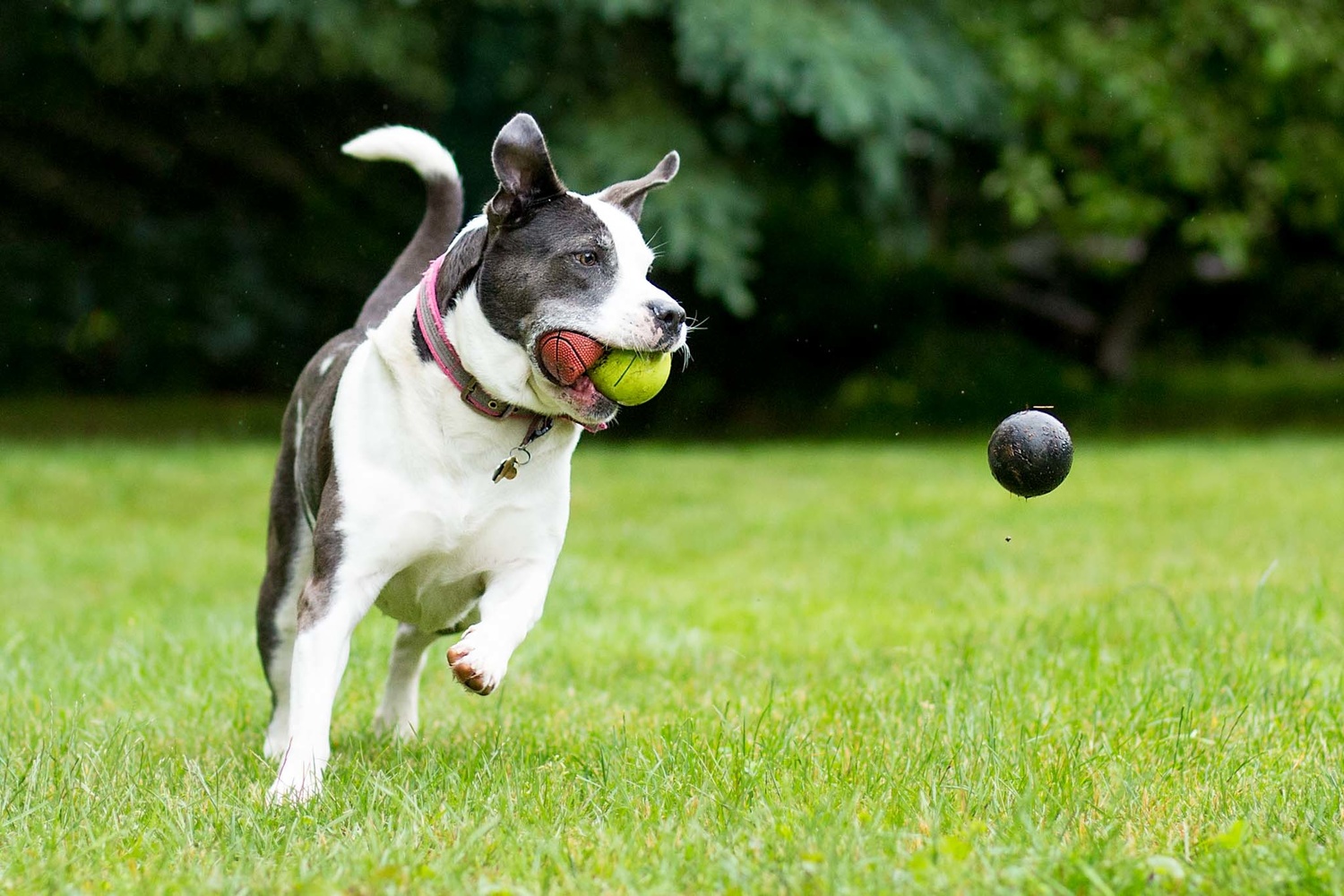When it comes to photographing animals, one of the most technically difficult images to capture is the running action shot. This style of photography often captures the most comical expressions, and is a necessary skill for artists who specialize in photographing dogs. Choosing the appropriate lens, camera settings, and lighting environment will ensure that you will be able to consistently nail your action images time after time.
As a dog photographer, one important skill to have in your toolkit is the ability to capture a moving subject. Dogs move much faster than people, and even with perfect camera settings and equipment, it can be a challenge to physically keep up with maintaining the focus point aimed accurately at your subject. In this article I’m going to specifically cover tips for capturing images of dogs running directly toward you. These can be the most difficult action shots to capture since the plane of focus changes constantly.
Lens Selection and Camera Settings
When selecting a lens for dog action photography, long focal lengths are best. I photograph moving dogs at either 85mm or 200mm. This gives the dog ample room to run. Because of the compression of long focal lengths, the size of the dog in the frame does not change as quickly when running toward you as it would for short focal lengths.
For camera settings, I use single-point autofocus set to the center point. The center point is generally the best at tracking focus. The autofocus mode should be set to AI-Servo (Canon)/AF-C (Nikon). The drive mode is set to burst/continuous shooting. Though not necessary, I use back-button focus as it is more comfortable than using the halfway-shutter position for pre-focusing. I like to have my shutter speed set at around 1/1000s. For aperture, it might make sense to always shoot wide open, but for very fast lenses, this might make the depth of field so narrow that you will sacrifice the number of images that are in focus. I will typically photograph dogs at f/2.8-f/5.6, depending on the ambient light, and set my ISO accordingly. An image with a bit of noise is always better than one that is out of focus. Once I have established my settings, I set my camera to manual mode so that each image is consistent.
Positioning and Lighting Environment
To find the best direction to set up your running photos, I like having the brightest part of the sky behind me, to maximize the amount of light falling on the dog and create catchlights in their eyes. I generally do not recommend trying to create action shots in a backlit environment since it can be more difficult for the camera to track focus. Be aware that even on an overcast day, one area of the sky will be the brightest. If you can’t tell where, use your camera’s meter to check. To make your dog stand out from the surroundings, try to compose with a dark background, such as a forest or nearby building.
Though it requires getting a little dirty, the best way to photograph dogs running toward you is lying on your belly. If you are capturing action images as part of a dog portrait session, there are two main techniques I use to get the dog running toward you. One is to have the owner stand far away from me with their dog, and throw a ball at me while I’m lying in the ground. They get bonus points if they manage to hit me. The second method, which requires either two people or to have an obedient dog, is to have the dog “stay” or be restrained while you position yourself far away from them, and then have an owner stand behind you and call the dog’s name or squeak a toy to prompt the dog to run toward you. Out of these two methods, I prefer the latter as dogs typically run in a straighter and more predictable path.
Burst Away
Once you are in position, pre-focus on the dog, and release the shutter as the dog runs toward you. Try your best to keep the focus point on the dog’s nose (or face somewhere). This takes a bit of practice, and a bit of luck with where the dog runs. This will also get easier after a few runs, when the dog becomes a bit tired and doesn’t move quite so fast.
If you are just beginning to experiment with action photography, you might want to call up a friend to see if they’d like to bring their dog out to help you practice. Once you are able to consistently capture sharp action photos, they will be a staple to your dog photography repertoire, whether you specialize in portrait sessions or events.










"vizsla chasing ball at beach" Is the best dog picture I have ever seen.
Hey thanks Jonathan! This guy was in great shape so he ran at me about 20 times, which helped me to get lucky with this one.
i didn't see anywhere that good luck helps too.
I touched on this...second last paragraph :)
nice to see pet stuff again :)